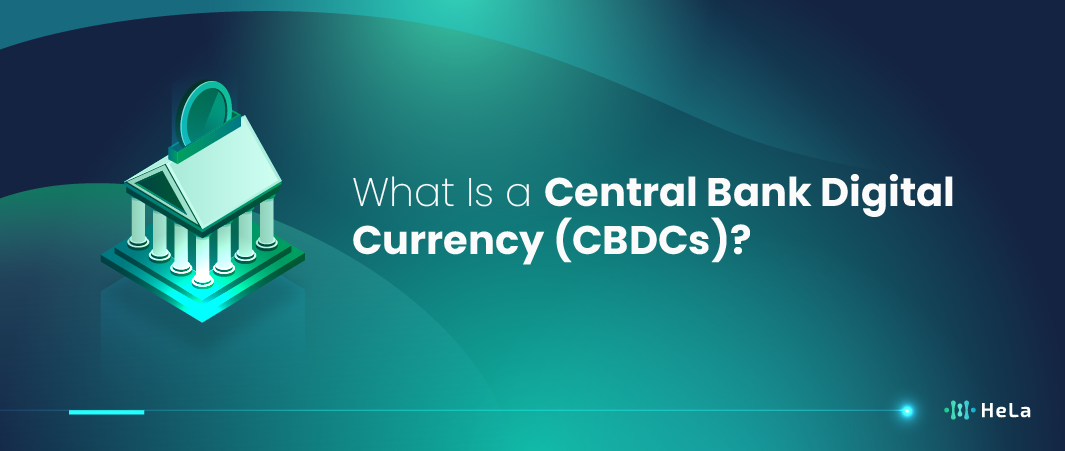In recent years, the concept of Central Bank Digital Currencies (CBDCs) has gained significant attention. As technology continues to evolve, the way we handle money is also transforming. Central banks around the world are exploring the potential of digital currencies, aiming to modernize the financial system and address various economic challenges.
CBDCs represent a new form of digital money issued by central banks, distinct from traditional physical cash and cryptocurrencies. Unlike decentralized cryptocurrencies such as Bitcoin, CBDCs are centrally regulated and backed by national governments. This fundamental difference offers both advantages and challenges, making CBDCs a topic of intense debate among policymakers, economists, and the general public.
Understanding CBDCs is crucial as they have the potential to reshape the financial landscape. This article will explore what CBDCs are, how they work, their benefits and drawbacks, and provide examples from around the world. By the end, you’ll have a comprehensive understanding of this emerging financial innovation.
What Is a Central Bank Digital Currency (CBDC)?

A Central Bank Digital Currency (CBDC) is a digital form of money issued and regulated by a country’s central bank. Unlike traditional physical currency, CBDCs exist only in electronic form. They are designed to complement, rather than replace, existing forms of money, such as banknotes and coins.
CBDCs can be thought of as a digital version of the cash you use every day, but with the added security and oversight of central bank regulation. This means that CBDCs are considered legal tender and can be used for transactions just like traditional money. The central bank ensures the stability and reliability of the digital currency, which helps build public trust.
Also Read: 12 Best AI Crypto Projects to Consider in 2024
There are two main types of CBDCs: retail and wholesale. Retail CBDCs are intended for use by the general public for everyday transactions, such as buying goods and services. Wholesale CBDCs, on the other hand, are designed for financial institutions to use in large-scale transactions and interbank settlements. Both types aim to improve the efficiency and security of financial systems.
How Do CBDCs Work?

Central Bank Digital Currencies (CBDCs) function similarly to other forms of digital payments but with key differences that set them apart. Understanding how CBDCs work involves looking at their issuance, distribution, and the technology behind them.
Issuance and Distribution
CBDCs are issued directly by a central bank, much like traditional cash. The central bank controls the supply and maintains the digital ledger that records all transactions. Unlike decentralized cryptocurrencies, where transactions are validated by a distributed network of nodes, CBDCs rely on a centralized ledger maintained by the central bank.
When a central bank issues CBDCs, they can distribute them through commercial banks and other financial institutions. Individuals and businesses can then access these digital currencies through their bank accounts or digital wallets. This distribution method ensures that CBDCs are integrated into the existing financial infrastructure, making them easily accessible and usable for everyday transactions.
The Technology Behind CBDCs
The underlying technology for CBDCs can vary, but it often involves the use of blockchain or distributed ledger technology (DLT). Blockchain provides a secure and transparent way to record transactions, ensuring that every digital unit of currency is accounted for and cannot be duplicated or forged. However, not all CBDCs use blockchain; some may use other types of centralized databases that offer similar security features.
CBDCs also incorporate advanced cryptographic techniques to protect user privacy and ensure the security of transactions. This means that while the central bank can track the overall flow of money to prevent fraud and money laundering, individual transactions can still be kept private.
Transaction Process
When a user makes a transaction with CBDCs, the process is straightforward. The digital currency is transferred from the payer’s digital wallet to the recipient’s wallet, with the transaction recorded on the central bank’s ledger. This process is usually instantaneous, reducing the need for intermediaries and lowering transaction costs.
Additionally, CBDCs can be programmed with smart contracts, which are self-executing contracts with the terms directly written into code. This allows for automated and conditional transactions, such as automatic payment of recurring bills or escrow arrangements, adding another layer of functionality to CBDCs.
Benefits of CBDCs
Central Bank Digital Currencies (CBDCs) offer a range of benefits that can enhance the financial system for both individuals and institutions. Here are some of the key advantages:
Financial Inclusion
One of the most significant benefits of CBDCs is their potential to improve financial inclusion. In many parts of the world, people lack access to traditional banking services. CBDCs can provide these unbanked or underbanked populations with a secure and efficient means of conducting financial transactions. With just a smartphone and internet access, individuals can participate in the digital economy, making payments, saving money, and accessing financial services without needing a traditional bank account.
Reduced Transaction Costs
CBDCs can significantly reduce the costs associated with financial transactions. Traditional payment systems often involve multiple intermediaries, each taking a fee. With CBDCs, transactions can be processed directly and instantaneously by the central bank’s infrastructure, eliminating the need for intermediaries and lowering transaction fees. This can be particularly beneficial for cross-border payments, which are typically expensive and slow.
Enhanced Security and Fraud Prevention
Digital currencies issued by central banks come with robust security measures. The use of advanced cryptographic techniques ensures that CBDCs are secure from hacking and counterfeiting. Additionally, the centralized nature of CBDCs allows for better tracking and monitoring of transactions, helping to prevent illegal activities such as money laundering and fraud. This enhanced security can increase public trust in digital currencies.
Monetary Policy Efficiency
CBDCs provide central banks with more effective tools for implementing monetary policy. With real-time data on money flows and transactions, central banks can make more informed decisions. CBDCs also enable central banks to implement negative interest rates more easily, if necessary, to stimulate economic activity. Furthermore, during economic crises, central banks can distribute stimulus payments directly to citizens through CBDCs, ensuring that financial aid reaches those who need it most quickly and efficiently.
Innovation in Payment Systems
The introduction of CBDCs can drive innovation in the financial sector. By integrating digital currencies into the existing financial system, banks and financial institutions can develop new financial products and services. This can lead to greater competition, improved efficiency, and enhanced user experiences. Additionally, CBDCs can support the development of smart contracts and programmable money, enabling automated and conditional transactions.
CBDCs represent a significant shift in how financial systems operate, promising numerous benefits from financial inclusion to enhanced security. As central banks continue to explore and develop these digital currencies, they hold the potential to transform the financial landscape for the better.
Potential Drawbacks of CBDCs

While Central Bank Digital Currencies (CBDCs) offer numerous benefits, they also present several potential drawbacks and challenges that need to be carefully considered:
Privacy Concerns
One of the main concerns surrounding CBDCs is the potential impact on privacy. Since CBDCs are issued and regulated by central banks, they come with a high level of transaction monitoring and oversight. This could lead to concerns about government surveillance and the potential misuse of personal financial data. Maintaining a balance between necessary oversight to prevent fraud and preserving individual privacy will be a critical challenge.
Risk of Cyber Attacks
As digital entities, CBDCs are vulnerable to cyber attacks. Central banks must invest heavily in cybersecurity measures to protect the digital currency infrastructure from hacking, data breaches, and other cyber threats. A successful attack on a CBDC system could have severe consequences, including financial loss, loss of public trust, and economic instability.
Disruption to Banking Sector
The introduction of CBDCs could disrupt the traditional banking sector. If individuals and businesses start holding their money directly in CBDCs rather than in commercial bank accounts, banks could see a decrease in deposits. This reduction in deposits could limit banks’ ability to lend money, potentially leading to reduced credit availability and higher interest rates. Central banks will need to develop strategies to mitigate these impacts on commercial banks.
Implementation Costs
Developing, implementing, and maintaining a CBDC system requires significant investment. Central banks need to build robust technological infrastructure, ensure cybersecurity, and create regulatory frameworks. These costs can be substantial, and there is a risk that the benefits of CBDCs might not outweigh the expenses involved in their implementation.
Financial Stability Risks
The widespread adoption of CBDCs could introduce new risks to financial stability. For example, during times of financial crisis, people might quickly convert their bank deposits into CBDCs, leading to bank runs and liquidity shortages in the banking sector. Central banks will need to design CBDCs in a way that minimizes these risks, such as implementing withdrawal limits or providing incentives to keep money in traditional bank accounts.
Limited Accessibility and Digital Divide
While CBDCs have the potential to improve financial inclusion, they also risk exacerbating the digital divide. Access to CBDCs requires digital literacy and reliable internet access, which may not be available to everyone, particularly in developing countries or rural areas. Ensuring that CBDCs are accessible to all segments of the population will be crucial to avoid leaving vulnerable groups behind.
CBDCs present a mixed bag of potential benefits and drawbacks. Careful consideration, planning, and implementation will be essential to maximize their positive impact while mitigating risks. Balancing privacy, security, and accessibility concerns with the need for financial innovation is a complex but necessary endeavor for central banks worldwide.
Examples of CBDCs Around the World

Several countries have taken significant steps toward exploring, piloting, or even implementing Central Bank Digital Currencies (CBDCs). Here are some notable examples:
China: Digital Yuan (e-CNY)
China is one of the leading countries in the development and implementation of a CBDC. The People’s Bank of China (PBOC) has been actively testing the digital yuan, also known as the e-CNY. Pilot programs have been conducted in several major cities, allowing residents to use the digital currency for various transactions, from paying bills to shopping. The PBOC aims to improve the efficiency of its monetary system and reduce reliance on cash, while also enhancing the government’s ability to monitor and control the financial system.
Sweden: e-Krona
Sweden’s Riksbank has been exploring the e-Krona as a response to the declining use of physical cash in the country. The e-Krona project aims to provide a digital complement to cash, ensuring that the public continues to have access to a central bank-issued currency. The Riksbank has conducted extensive research and pilot tests to evaluate the feasibility and impact of introducing the e-Krona. If implemented, the e-Krona could serve as a secure and efficient means of payment for Swedish citizens.
Bahamas: Sand Dollar
The Bahamas became one of the first countries to officially launch a CBDC with the introduction of the Sand Dollar in October 2020. The Sand Dollar is designed to provide financial inclusion and improve access to financial services for all Bahamians, particularly those in remote and underserved areas. The Central Bank of The Bahamas issues and regulates the Sand Dollar, which can be used for various transactions through digital wallets. The success of the Sand Dollar could serve as a model for other small island nations facing similar challenges.
European Union: Digital Euro
The European Central Bank (ECB) is actively investigating the potential of a digital euro. While the project is still in its exploratory phase, the ECB has published extensive reports and conducted public consultations to gather input on the design and implementation of a digital euro. The primary goals are to complement cash, ensure monetary sovereignty, and provide a secure and efficient payment option for European citizens. The ECB aims to create a digital currency that is accessible, reliable, and adaptable to future technological advancements.
Also Read: 7 Best Software Wallets You Should Know in 2024
United States: Digital Dollar
The United States is also exploring the concept of a digital dollar. The Federal Reserve has been conducting research and engaging with stakeholders to assess the potential benefits and challenges of a CBDC. While no official digital dollar has been launched yet, the Federal Reserve aims to understand how a CBDC could improve the U.S. financial system, enhance payment efficiency, and support financial inclusion. The development of a digital dollar will likely take into account the complex and diverse nature of the U.S. economy and financial infrastructure.
Uruguay: e-Peso
Uruguay has also conducted a pilot program for a digital currency known as the e-Peso. The Central Bank of Uruguay launched the pilot to evaluate the feasibility and impact of a digital currency on the country’s financial system. The e-Peso was issued to a limited number of participants and used for various transactions. The results of the pilot will inform future decisions on the potential implementation of a CBDC in Uruguay.
These examples illustrate the diverse approaches and motivations behind CBDC initiatives around the world. As more countries continue to explore and develop digital currencies, the global financial landscape is poised for significant transformation.
Conclusion
The advent of Central Bank Digital Currencies (CBDCs) marks a significant milestone in the evolution of money and finance. As technology continues to reshape our world, CBDCs offer a promising avenue for modernizing the financial system, enhancing security, and promoting financial inclusion. The potential benefits of CBDCs, from reducing transaction costs to enabling more effective monetary policy, underscore their importance in the future of global finance.
However, the introduction of CBDCs also comes with challenges and risks. Privacy concerns, cybersecurity threats, and the potential disruption to the traditional banking sector are critical issues that central banks must address. Balancing these concerns while harnessing the advantages of CBDCs will require careful planning, robust technological infrastructure, and comprehensive regulatory frameworks. The experiences of countries like China, Sweden, and the Bahamas provide valuable insights into the practical implementation of CBDCs, highlighting both the opportunities and hurdles associated with digital currencies.
In conclusion, CBDCs represent a transformative innovation with the potential to redefine the way we interact with money. As central banks around the world continue to investigate and develop digital currencies, the future of CBDCs looks promising. By addressing the challenges and leveraging the benefits, CBDCs can play a pivotal role in shaping a more inclusive, efficient, and secure financial landscape for the future.
Disclaimer: The information provided by HeLa Labs in this article is intended for general informational purposes and does not reflect the company’s opinion. It is not intended as investment advice or recommendations. Readers are strongly advised to conduct their own thorough research and consult with a qualified financial advisor before making any financial decisions.

Joshua Soriano
I am a writer specializing in decentralized systems, digital assets, and Web3 innovation. I develop research-driven explainers, case studies, and thought leadership that connect blockchain infrastructure, smart contract design, and tokenization models to real-world outcomes.
My work focuses on translating complex technical concepts into clear, actionable narratives for builders, businesses, and investors, highlighting transparency, security, and operational efficiency. Each piece blends primary-source research, protocol documentation, and practitioner insights to surface what matters for adoption and risk reduction, helping teams make informed decisions with precise, accessible content.
- Joshua Soriano#molongui-disabled-link
- Joshua Soriano#molongui-disabled-link
- Joshua Soriano#molongui-disabled-link
- Joshua Soriano#molongui-disabled-link

